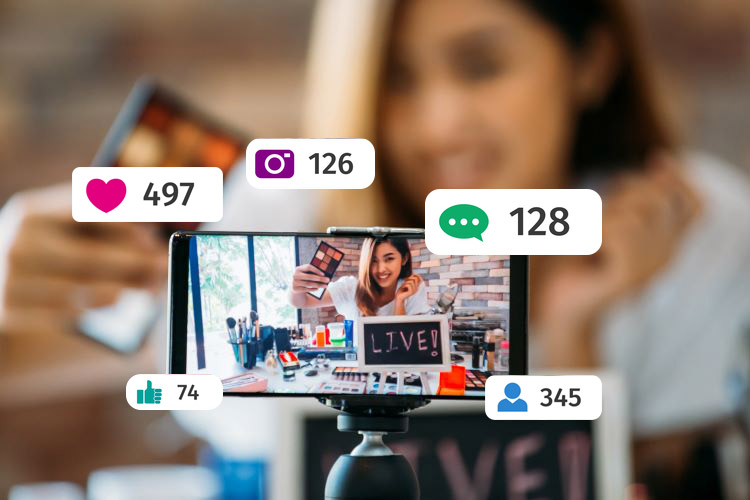Yesterday, we talked about direct marketing activities. So, today, we’ll talk about the same for indirect marketing.
Unlike direct marketing where you try to promote or sell a product or service directly to your target customer or audience, indirect marketing plays a longer game. Here, the objective is not to make a sales pitch, but to build your brand’s reputation over time.
It might sound daunting, but chances are, you’re probably doing some form of indirect marketing already. Let’s take a look at some of the most common examples:
1.) Content marketing.
As its name suggests, content marketing is all about providing value-driven content for your target audience. The sort of content that answers questions, educates readers about trending topics, and ultimately helps them become consumers.
The goal here is to build brand authority and to nurture a community of leads that trust and like the information you provide. Obviously, this can’t be done overnight, but this approach is great for catering to a wide audience – and holding their attention until they’re ready to buy from you.
Blogs are the most popular form of content marketing. Here, articles educate your audience on a wide variety of topics relevant to your industry. Alternatively, you can also do videos and podcasts if you want to appeal to your audience’s visual and auditory senses rather than presenting a wall of text.
2.) SEO and link building.
As it turns out, great content and SEO go hand in hand. Search engine optimisation (SEO) started out as a way to spread a business’ website across the internet through link-building. High-quality content that users will want to share is just one way to get this done.
SEO specialists also incorporate specific keywords or phrases into the website copy or blog to make them easy for search engines to find and index. Furthermore, they also include relevant third-party links and citations to build your site’s authority.
Lastly, the better your web page is designed, the higher it will rank on search engines’ results page. Thus, making your website more visible to potential customers and more likely to generate leads that could eventually convert into sales.
3.) Social media marketing.
Like content marketing, social media marketing is all about nurturing a community that will like and trust your brand. The only difference is that you’ll be using social media platforms to promote content with this end in mind.
This form of indirect marketing may also involve maintaining an active social media presence. Aside from having and updating accounts on various platforms, you’ll also need to engage with your audience regularly. Think replying to comments, promptly attending to inquiries in your pm’s/dm/s, and boosting your most popular posts.
4.) Referral and loyalty programs.
These are a great way to encourage new and existing customers to keep buying from you rather than from your competitors. When you gamify the buying process and reward brand loyalty, you can potentially:
- Expand your customer base. You can offer discounts to customers who successfully refer their friends, for instance.
- Increase brand awareness. Lots of brands have contests on social media where they reward customers who tag their friends with product giveaways.
- Re-target customers. Some companies promote products to existing customers based on their purchase history.
As with any initiative that hinges on customer data, you do need to be mindful of legal requirements. First, your customers need to give their consent before you collect or use their data. Secondly, you’ll need to divulge what you’ll use their data for. Lastly, your customers should have the option to opt out at any time.
To learn more about the legalities surrounding customer loyalty programs Down Under, click here.
5.) Customer reviews.
No one buys from a business or company they don’t like or trust. But how can you get potential customers to like you before they actually buy from you?
Social proof definitely helps. Reviews from actual happy customers, whether on Google or on your social media platforms, can help build trust in your brand. Hence, some companies incentivise customers to leave reviews.
You should also keep a close eye on comments and questions posted across your social media accounts. Replying promptly to and satisfactorily resolving each one means that you value each customer’s feedback. Who wouldn’t want to do business with a company that will take care of them?
6.) Influencer marketing.
This involves collaborating with influential people in your industry to promote your brand awareness. Influencers can be leaders in your industry, celebrities, or even micro-influencers that cater to a specific niche with a highly-engaged audience.
Examples of influencer marketing include product placement, co-created content, sponsored content, or even ambassadorships.
Most businesses actually use a combination of direct and indirect marketing activities, and it can take time to find the right mix.
Fortunately, you can speed things up a bit by hiring the right people – even if you’re on a tight budget.
Remote Staff has been helping AU entrepreneurs and small-medium business owners like you expand their customer bases with the help of skilled remote workers from the Philippines since 2007. Thanks to our rich pool of digital marketing talents and the advantageous AU dollar- Philippine peso exchange rate, assembling a dream team without breaking the bank has never been easier.
Call us today or schedule a call back and let’s get started.







